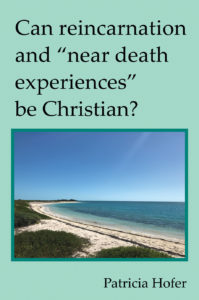Do not push the river, it will flow by itself.
Although this saying is of Polish origin, the conventional wisdom of all cultures probably contains something similar. Here’s how I see it applying to our Christian inspiration and believing.
In The Screwtape Letters, C. S. Lewis has his main character explaining how humans are “half spirit and half animal” (37). That’s why our spirit ever yearns for God, while our bodies are in thrall to biorhythms that ebb and flow. Humans, according to Lewis, spend their lives in a “series of troughs and peaks.” So, instead of maintaining a constant level of inspiration, Christians tend to “undulation—the repeated return to a level from which they repeatedly fall back” (37).
Until we understand it, this rise and fall in our spiritual experience can be truly demoralizing. And we make even more trouble for ourselves when we try to “push the river.” For example, we might proudly try to manufacture Christly devotion so that others don’t see our uncertainty. Or we might willfully try to prop up our emptiness with busyness—increasing our church activity and our good works and our Bible reading.
And yet, what we truly must have in these “troughs” is not pride but meekness, not pushing but yielding. It’s during these dry times that we come to realize that our relationship with Christ is really his relationship with us. It is not ours to push or to manipulate or to control. Our faith during these low ebbs might best be described as childlike progress, as in the words of Isaiah, “precept upon precept, precept upon precept, line upon line, line upon line, here a little, there a little” (28:10).
The great comfort for me is that these “troughs” in our believing don’t leave us where they found us. At least that is my experience. We don’t just “repeatedly fall back” to the same low level, as Lewis’ words might imply. Rather, our Christ spirit is strengthened by our patience and by moments of yielding. And so, each undulation brings a new wave, pushing us a little further onto the shore of spiritual life. (Turning Aside to See, 2011)


Leave a Reply